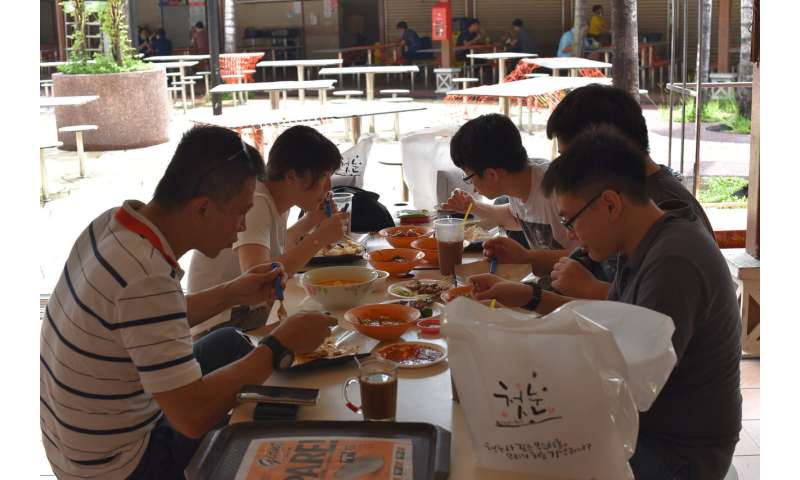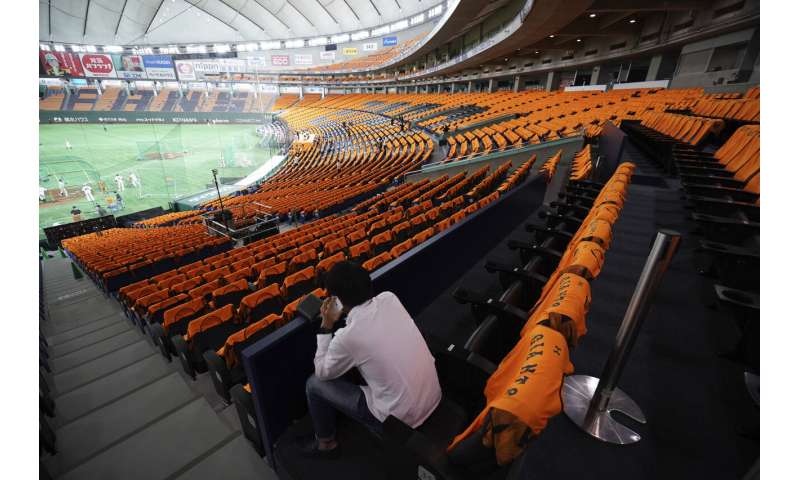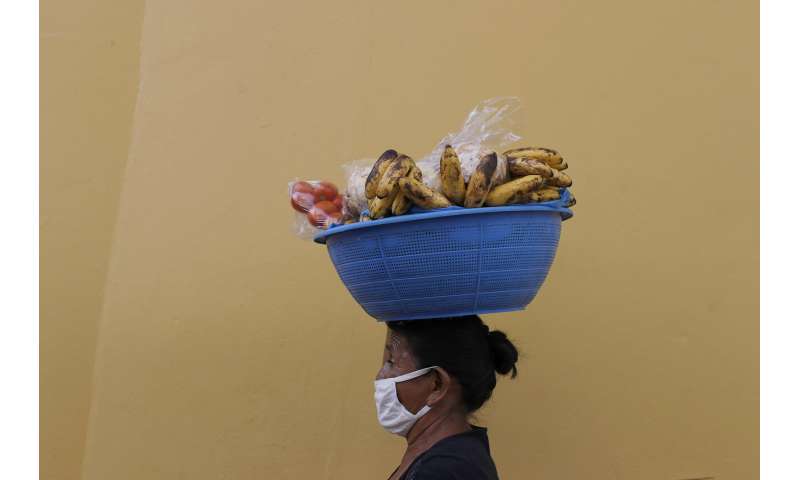
Singaporeans can wine and dine at restaurants, work out at the gym and socialize with no more than five people at a time as of Friday, when the city-state removed most of its pandemic lockdown restrictions.
The latest relaxation comes as reopenings in many places around the world are touching off fresh spikes in infections, raising questions about how to live with the coronavirus without causing unnecessary deaths or economic catastrophe.
Getting back to business in Singapore came as China declared a fresh outbreak in Beijing under control after confirming 25 new cases among some 360,000 people tested. That was up by just four from a day earlier.
A Chinese Center for Disease Control and Prevention official said the number of cases was expected to fall soon in outbreak centered on Beijing’s main wholesale market. So far Beijing has confirmed 183 new cases over the past week.
Singapore’s malls, gyms, massage parlors, parks and other public facilities reopened their doors with strict social distancing and other precautions.
“It was a long awaited experience, I would say. It’s been quite a few months long,” said Thomas Tan, a 34-year old customer service officer eating in an outdoor market. “It’s good to be able to eat outside with friends but there still must be social distancing.”

After at first appearing to have been a model for containing the virus, the country of only 5.8 million has one of the highest infection rates in Asia with 41,473 cases, mostly linked to foreign workers’ dorms. Authorities say such cases have declined, with no new large clusters and a stable number of other cases despite a partial economic reopening two weeks ago.
Wee Cheng Yan, a gym trainer, said it felt good to return to work after two months at home.
“Definitely, interaction has been lacking the past few months,” he said. “Watching a lot of TV. Doing a bit of resistance band training, which is not as effective as working out in the gym.”
Members of the gym still must make appointments and are limited to only two hours a day. The steam rooms remained shut and clients must wear masks at most times.

Contact sports, concerts, trade fairs, singing lessons and mass religious meetings are still banned and entertainment venues such as cinemas, karaokes and bars remain shut.
The 25 new cases reported Friday in Beijing were among 32 nationwide in China, four of them in Chinese who had returned from overseas.
Such outbreaks are inevitable, Wu Zunyou of the Chinese Center for Disease Control and Prevention told a news conference. But he stressed that prevention measures should not slacken.
Beijing suspended classes and put opening-up plans for everything from sports events to art exhibitions on hold. Bus travel to other regions was suspended to prevent the spread of the outbreak.
The outbreak started in the seafood section of the city’s Xinfadi market, raising worries infections might have come from imported fish or sea products. But a customs administration notice said nationwide testing for the coronavirus in food imports were all negative.

The pandemic is waxing and waning in many places, with numbers of cases soaring in Indonesia and India, Brazil and Mexico but appearing to be under control or contained in Thailand, Japan, Vietnam and New Zealand.
Japan’s foreign minister, Toshimitsu Motegi, said Friday that Japan and Vietnam have agreed to partially lift travel bans and ease restrictions step by step under the understanding that both countries have their outbreaks largely under control.
Vietnam is among four countries that Japan is discussing resuming mutual visits in phases. It is seeking similar arrangements with Thailand, Australia and New Zealand.
Meanwhile, India recorded 13,586 newly confirmed cases on Friday, raising its total to 380,532. Still, shops, malls, factories and places of worship have been allowed to reopen while schools and cinemas remain shuttered.

Infections surged in rural areas after hundreds of thousands of migrant workers left cities after losing jobs in a lockdown announced in late March. Such precautions are now restricted to high-risk “containment” zones.
In South Korea, outbreaks have inspired second-guessing on whether officials were too quick to ease social distancing guidelines in April after a first wave of infections waned. Officials reported 49 cases of COVID-19 on Friday as the virus continues to spread in the densely populated capital area of Seoul, where half of its 51 million people live. About 30 to 50 new cases have been confirmed per day since late May.
The new coronavirus has infected more than 8.4 million people worldwide and killed more than 453,000, according to figures compiled by Johns Hopkins University. The actual number is thought to be much higher because many cases are asymptomatic or go untested.

In the U.S., which has the most cases at nearly 2.2 million, states have been pushing ahead with reopenings from full or partial pandemic shutdowns despite surges in cases in many places, including Texas, Oklahoma, Florida and California.
New cases skyrocketed Thursday in Oklahoma by 450, double the record-setting number reported two days earlier. Tulsa County, where President Donald Trump plans a rally on Saturday at an indoor arena, remained the state’s leading hot spot with 120 new cases for a total of 1,825.
The new wave comes amid demonstrations to protest police killings of black citizens and ahead of weekend Juneteenth celebrations marking the end of slavery in the U.S.
Scores of people in campers and tents were lining up early for Trump’s first rally in months. Protesters were also gathering.










Trump said Thursday he picked Oklahoma partly because “you’ve done so well with the COVID.”
Tulsa Health Department Director Bruce Dart pushed for postponing the event, but the state’s Republican governor, Kevin Stitt said Oklahoma was ready and its rate of positive COVID-19 tests was lower than many other states.
Source: Read Full Article
